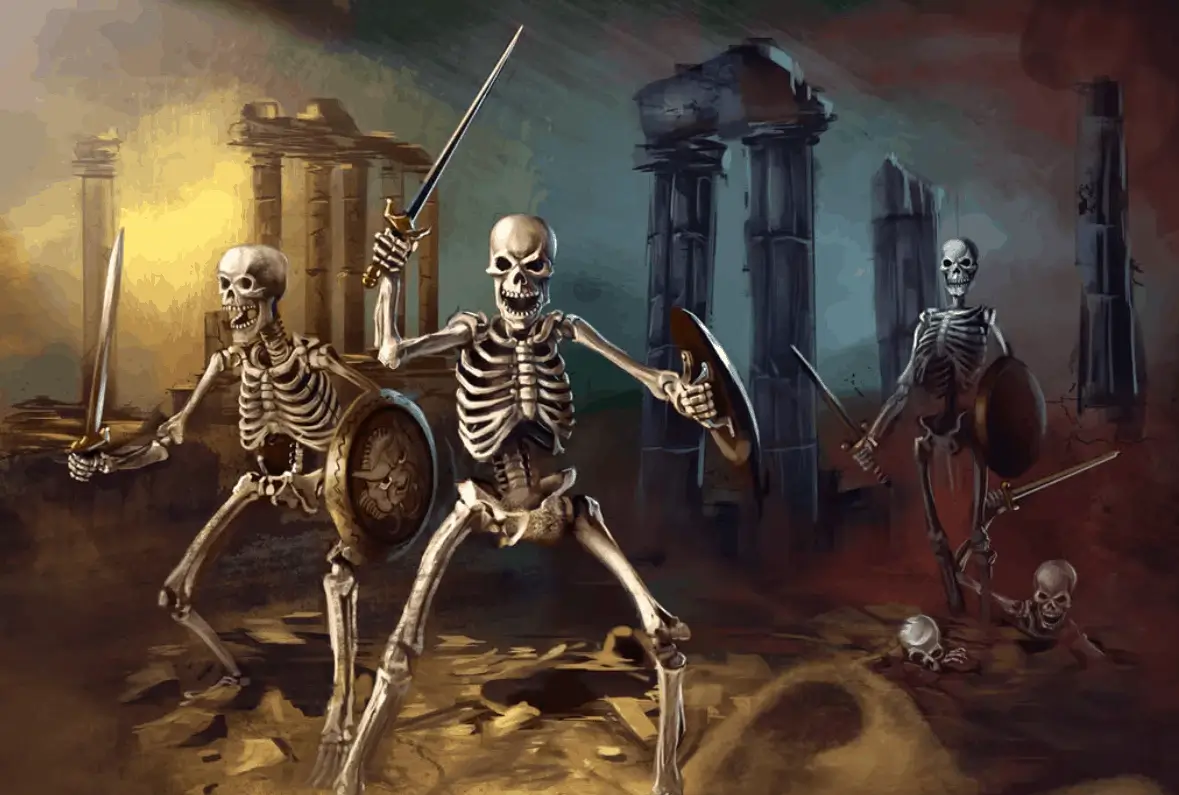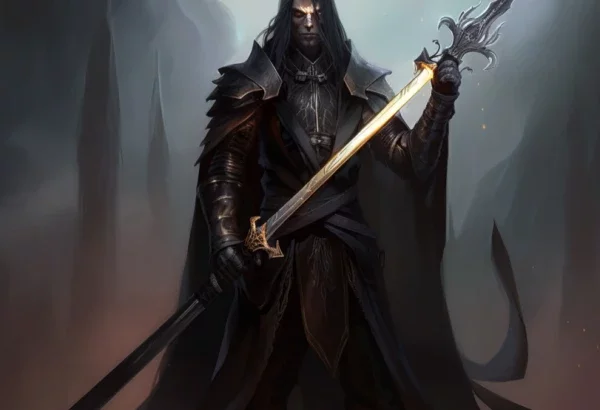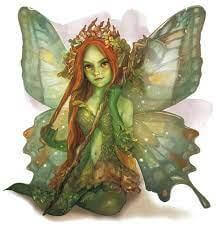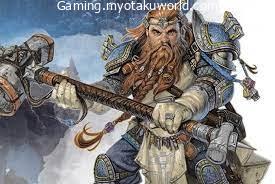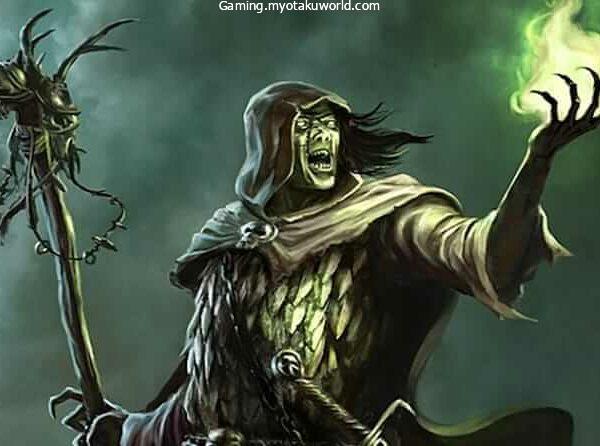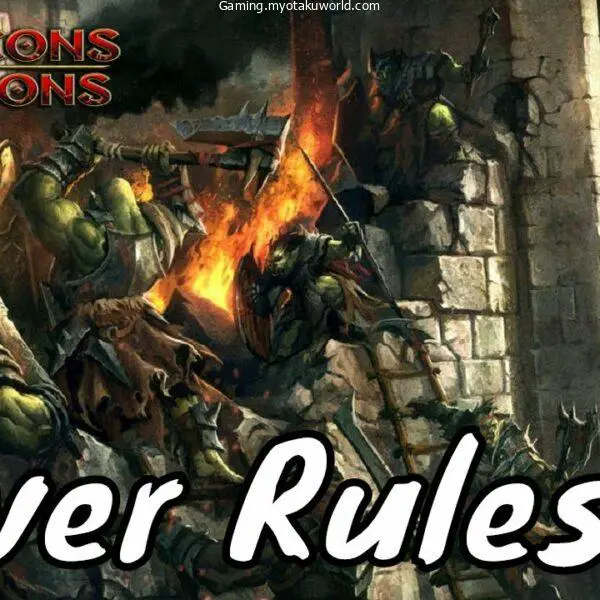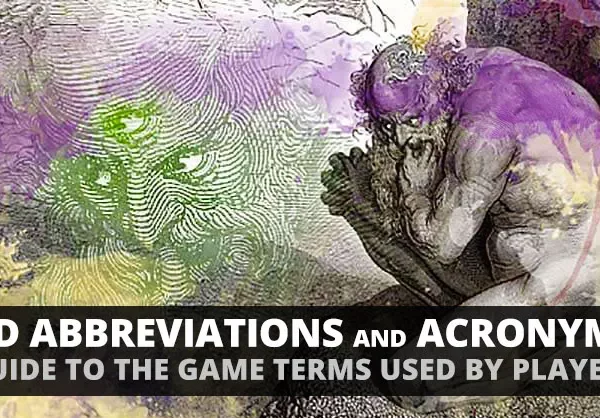In any 5e campaign, the skeleton is a must-have. In both DnD and the real world, it’s one of the most venerable monsters.
Because we are all walking skeletons, and our skeletons are sometimes all that is left of us when we die. The Skeleton 5e guide is a worthy addition to the core rulebook.
With this in mind, any dungeon master who wishes to add some creepy skeleton feelings to their story can make the most of this.
The skeleton offers a wide range of opportunities for players as well, and not simply as a mob enemy.
A skeleton-based class is one of the most popular Homebrew classes, and more and more players are picking it up.
I’ll go through the following things in this 5e beginner’s guide:
- In DnD, the skeleton is a creature that can be used to great effect.
- In this article, we will discuss the advantages and downsides of using Skeleton as a homebrew character.
- Using skeletons as a monster in 5e DnD
- What exactly is a skeleton in Dungeons and Dragons?
- Why do skeletons behave so weirdly?
- How do you use a skeleton as a dungeon master?
- Vulnerabilities, immunities, and senses of skeletons
- The Skeleton’s actions and how to use them
- Using a skeleton class as a player
- FAQs
Using skeletons as a monster in 5e DnD
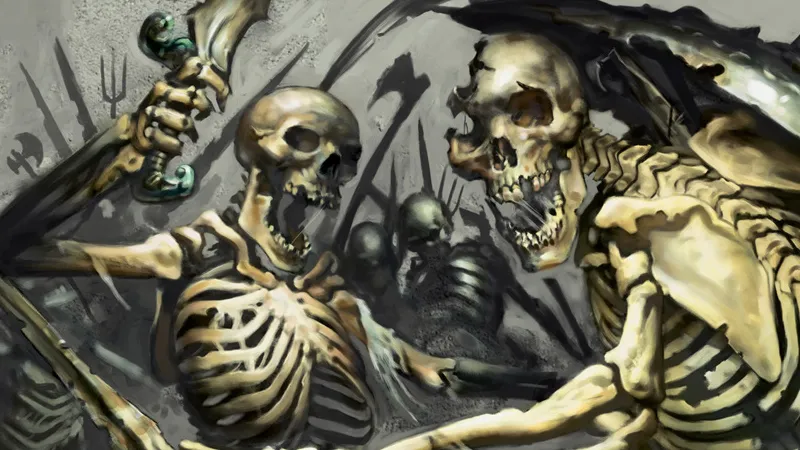
What exactly is a skeleton in Dungeons and Dragons?
Human and animal corpses imbued with dark necromancy magic are referred to as skeletons in the fullest sense of the word.
They are magically revived corpses that have been given a new lease on life.
Using this magic, it assembles their bones and whatever remains of the human or animal and provides it with the necessary energy to perform actions.
Resurrecting a skeleton can bring back the soul and some of the primordial emotions that were lost when it was a skeleton.
A reanimated skeleton, if done by a Spell caster, is subservient to its master. There is no doubt or creative thought in their obedience to the directives they are given.
Their directives are taken literally by them. The problem arises when the caster is unable to issue fresh commands and a new task or difficulty arises.
To say they are incapable of complex orders is an exaggeration. As long as they are given clear directions, they can accomplish a wide range of tasks.
Why do skeletons behave so weirdly?
Reanimated and lacking the intelligence of their former selves doesn’t mean they’re unable to solve problems.
When kids can just open a door by using the handle, they won’t start slamming it shut. Habitual behaviors are also a part of their makeup.
Free or temporary control of skeletons can lead to these effects.
Because of their habitual behavior, they’ll continue to behave in the same way they did in their previous existence.
Farming skeletons may begin to mow the fields, whereas woodcutter skeletons are more likely to chop down trees. The skeletons of animals and creatures are the same.
They have a tendency to attack living things as a habitual practice. Because of the necromantic power residing within them, they have a strong desire to kill with no regard for morals or conscience.
Because of this, they will battle to the death until their summoner or master tells them otherwise.
In dungeons, they are a great ‘living trap’ It is possible to go inactive for long periods of time without needing food, water, or rest.
How do you use a skeleton as a dungeon master?
In the Monster Manual for 5e DnD, turn to page 272. The stats we need for our skeleton can be found here.
Medium-sized beasts with undead ancestors. Their armor class is 13, and they have 13 hit points, or 2d8 +4 if you prefer a more random result.
When you boil it all down, the following is what it all means:
- Undead – A skeleton is a clear example of an undead creature. Skeletons are affected by all spells and abilities that afflict the undead. In 5e, the damage dealt by a Paladin’s Divine Smite spell is increased.
- A skeleton’s armor and hit points aren’t all that remarkable. It’s unlikely that your group will have any difficulty coping with one of the stats. Even if you’re able to summon a cleric or a paladin, they’re still a formidable foe when they’re in a group.
These are the rest of the stats they have according to the monster manual.
- Constitution: 15 (+2)
- Intelligence: 6 (-2)
- Strength: 10 (+0)
- Dexterity: 14 (+2)
- Wisdom: 8 (-1)
- Charisma: 5 (-3)
So, what are the best strategies for making the most of skeleton’s stats without having your players walk all over them?
Due to the low wisdom stat of 8, players with good wisdom save spells will do a lot of damage to your skeletons (-1).
They shine when they have to save their constitution or dexterity. In this case, if your players rely on spells with dex saves, they are going to have a difficult time.
Vulnerabilities, immunities, and senses of skeletons
But they have interesting vulnerabilities and immunities that can be exploited to get rid of them or make them even more powerful.
Damage from bludgeoning is ineffective against our bone fiend.
Using a weapon that can deal with that level of output puts them at risk of taking twice as much damage as normal. So there are clubs, hammers, Warhammer, and so on in this collection.
One of the skeleton’s poison immunities means that no matter how much poison damage your assault has, it will harm nothing.
In addition, a skeleton is immune to poisoned environments. No matter what they do, skeletons are impervious to tiredness because of their second immunity.
These immunities should be exploited to their greatest potential by a skilled dungeon master. Skeletons won’t feel a thing from poison gas traps that are placed all over the site.
If you’re an experienced D&D player, you may want to know a little more about the actions skeletons can do in 5e DND before we cover the specific acts they can take.
Skeletons can also see up to 60 feet in the dark. In the D&D world, that’s quite a distance. At 9 out of 10, they have a reasonable level of self-awareness.
Finally, if they had any previous knowledge of a language, they will still be able to speak it. They will be unable to communicate because they are devoid of vocal cords.
As a result, they are often unable to communicate effectively in written form.
The Skeleton’s actions and how to use them
Only two types of actions are available to this reanimated mound of bones. One is a sword attack, and the other is a bow-and-arrow movement.
I don’t think this is right. Make your monsters more lifelike as a dungeon master. Your skeletons can dodge an attack, disengage from the fight (if they have a master nearby), or grapple players as a result.
Furthermore, there is no reason why a skeleton couldn’t be given a weapon other than the two previously mentioned.
If you want to use a hammer, you can just tell the skeletons to do so. For magical equipment and armor, the same holds.
You can’t stop your skeletons’ masters from providing them stronger weapons and armor if he’s well-off.
Make sure your skeletons have a variety of weapons and skills to choose from. Be aware of your surroundings and use them to your advantage to inflict maximum damage on the party.
The skeletons, as stated, are immune to poison, but the majority of players aren’t. If skeleton lords wish to keep out all life forms from the area they’re protecting, they have no choice except to utilize poison traps.
To make the most of skeletons in your game, you’ll need a little ingenuity; otherwise, your players will see them as nothing more than a meat grinder for bones.
Keep in mind that skeletons can be found in a wide variety of animals and plants. From a mouse to a dragon, almost any vertebrate’s skeleton can be recreated.
Using a skeleton class as a player
It’s a lot of fun to play as a skeleton as a character! There is a slew of suggestions on how to make it more enjoyable for everyone, including your dungeon master.
The fact that you’re a skeleton gives you several advantages. When you don’t get sick, you don’t need food, and you don’t need to sleep.
If this is the case, you’ll save a lot of money at the hotel! To avoid overpowering this, it is recommended that one is in a sleep-like state.
I would recommend a two-to-six-hour obligatory rest break.
If you’d like, you can disconnect your body from the Internet. It is possible to detach and reattach your bones since they are held together by magic.
To make it more believable, I’d add a modest fee.
Breaking the magical tie between distinct bones and joints sounds like it could cause some harm.
Your DM, on the other hand, has complete control over this. If you don’t, you’ll turn into a mean, lean dodger.
At any point in time, disconnecting your bones could help reduce the severity of a blow. That’s a little too powerful for my taste.
As a result, determining how intelligent you are as compared to a skeleton is one of the most difficult aspects of playing the game.
This option can be used in conjunction with other options, such as making the skeleton an aberration that retains much of its intelligence.
At the beginning of the game, the skeleton has a fairly average level of intelligence as compared to other skeletons.
In other words, you must engage in obnoxious skeleton behavior, such as attacking living beings, unless specifically instructed not to do so.
If you’re playing as the good guys, it’s a good idea to give your party the ability to deliver commands to you directly.
If you’re a good storyteller, you can teach the skeleton to become more intelligent and self-aware as you level up.
Using your dark vision correctly is an important part of becoming an effective skeleton. If your party spends a lot of time in dungeons, this is a nice perk to have in your arsenal.
Another element that many gamers overlook is the fact that simple skeletons are unable to talk.
Magic vibrating sounds that sound like speech, or printed words, could be an alternative to this. To do so, you’ll require a high level of intelligence.
It would be fun to add an item that can be used to take the voice of a target if the player is a mute skeleton.
All in all, it’s loads of fun to play as a ghost! Your campaign and game will be one-of-a-kind if you’re able to follow the rules of being undead and all of the advantages and disadvantages that go along with it.
FAQs
Can I damage a skeleton with a spell or attack with necrotic damage?
Necrotic damage can be used in 5e DnD to kill a skeleton. Despite their undead status, they aren’t protected from this type of harm. They are protected from poison.
Are there attacks that work better on skeletons?
Some attacks are better on skeletons, but there are others as well. Clerics’ Turn Undead and Paladin Divine Smite are two examples of such spells. Some weapons can inflict twice as much damage against skeletons. A club or a Warhammer are two examples of weapons that may inflict serious injury by striking repeatedly.
Is it possible to charm a skeleton, or are they immune?
Even a skeleton can be charmed. They aren’t immune, but make sure you read your charm skill’s instructions. The undead may not be able to benefit from this.
